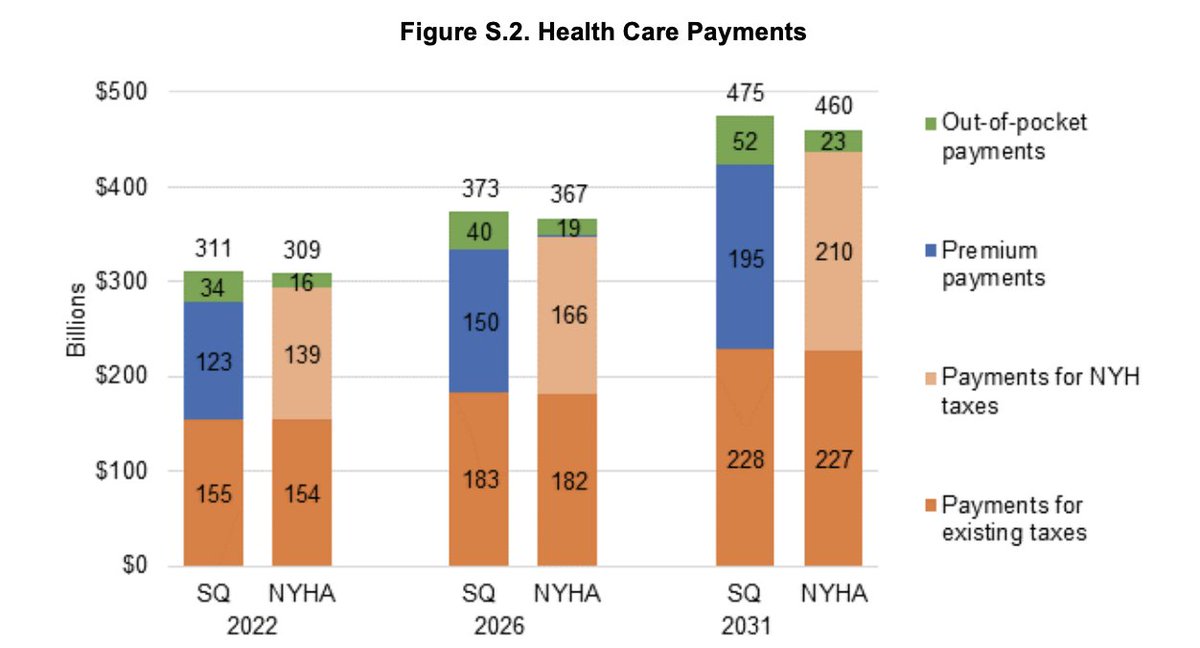This sentence includes one grossly misleading claim and one flatly inaccurate one.
news.littlesis.org/2020/02/14/ins…
news.littlesis.org/2020/02/14/ins…

$80B was RAND's estimated savings over *10 years.* That's about 2% of total health spending. It's based on multiple dubious assumptions, including the idea that health providers, Albany's most formidable lobbying force, will accept slower growth in payments. 

RAND's first-year savings estimate was $2B or less than 1%, which is negligible given the enormous uncertainty involved in forecasting health care spending. 

As for what share of New Yorkers would hypothetically save money under single-payer, RAND gave several numbers, none of which was close to 98%.
Its baseline estimate was 65%, and came with this crucial caveat:
Its baseline estimate was 65%, and came with this crucial caveat:

In other words, the theoretically savings for two-thirds of New Yorkers would depend almost entirely on the other third being forced to pay more -- almost one-fifth of their income at the high end. 

Here's the RAND report: rand.org/content/dam/ra…
Here is my summary of the case against single-payer:
empirecenter.org/publications/t…
And here is my more in-depth analysis:
empirecenter.org/publications/d…
Here is my summary of the case against single-payer:
empirecenter.org/publications/t…
And here is my more in-depth analysis:
empirecenter.org/publications/d…
• • •
Missing some Tweet in this thread? You can try to
force a refresh









